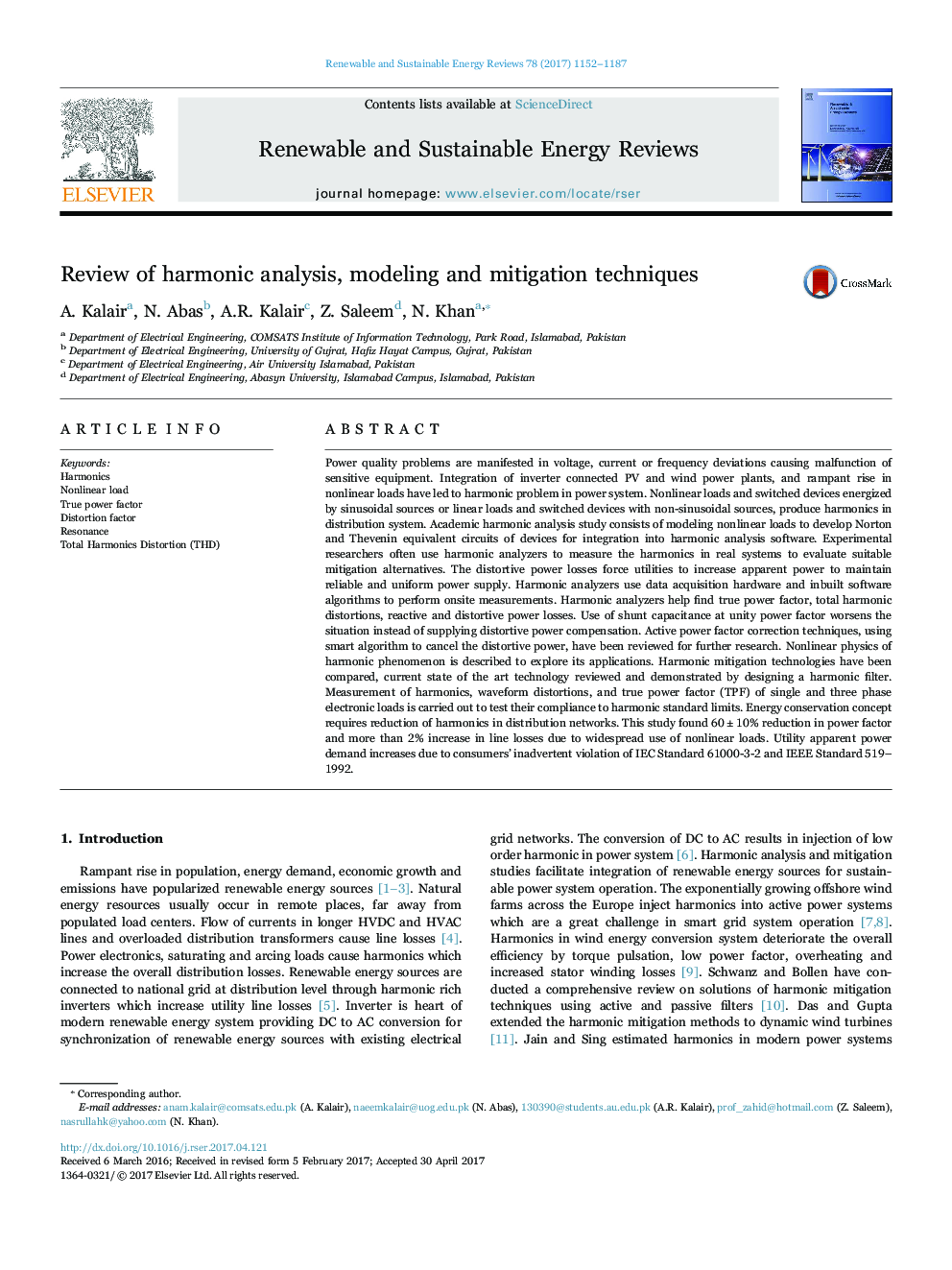| کد مقاله | کد نشریه | سال انتشار | مقاله انگلیسی | نسخه تمام متن |
|---|---|---|---|---|
| 5482525 | 1522308 | 2017 | 36 صفحه PDF | دانلود رایگان |
عنوان انگلیسی مقاله ISI
Review of harmonic analysis, modeling and mitigation techniques
ترجمه فارسی عنوان
بررسی تجزیه و تحلیل هارمونیک، مدل سازی و تکنیک های کاهش آن
دانلود مقاله + سفارش ترجمه
دانلود مقاله ISI انگلیسی
رایگان برای ایرانیان
موضوعات مرتبط
مهندسی و علوم پایه
مهندسی انرژی
انرژی های تجدید پذیر، توسعه پایدار و محیط زیست
چکیده انگلیسی
Power quality problems are manifested in voltage, current or frequency deviations causing malfunction of sensitive equipment. Integration of inverter connected PV and wind power plants, and rampant rise in nonlinear loads have led to harmonic problem in power system. Nonlinear loads and switched devices energized by sinusoidal sources or linear loads and switched devices with non-sinusoidal sources, produce harmonics in distribution system. Academic harmonic analysis study consists of modeling nonlinear loads to develop Norton and Thevenin equivalent circuits of devices for integration into harmonic analysis software. Experimental researchers often use harmonic analyzers to measure the harmonics in real systems to evaluate suitable mitigation alternatives. The distortive power losses force utilities to increase apparent power to maintain reliable and uniform power supply. Harmonic analyzers use data acquisition hardware and inbuilt software algorithms to perform onsite measurements. Harmonic analyzers help find true power factor, total harmonic distortions, reactive and distortive power losses. Use of shunt capacitance at unity power factor worsens the situation instead of supplying distortive power compensation. Active power factor correction techniques, using smart algorithm to cancel the distortive power, have been reviewed for further research. Nonlinear physics of harmonic phenomenon is described to explore its applications. Harmonic mitigation technologies have been compared, current state of the art technology reviewed and demonstrated by designing a harmonic filter. Measurement of harmonics, waveform distortions, and true power factor (TPF) of single and three phase electronic loads is carried out to test their compliance to harmonic standard limits. Energy conservation concept requires reduction of harmonics in distribution networks. This study found 60±10% reduction in power factor and more than 2% increase in line losses due to widespread use of nonlinear loads. Utility apparent power demand increases due to consumers' inadvertent violation of IEC Standard 61000-3-2 and IEEE Standard 519-1992.
ناشر
Database: Elsevier - ScienceDirect (ساینس دایرکت)
Journal: Renewable and Sustainable Energy Reviews - Volume 78, October 2017, Pages 1152-1187
Journal: Renewable and Sustainable Energy Reviews - Volume 78, October 2017, Pages 1152-1187
نویسندگان
A. Kalair, N. Abas, A.R. Kalair, Z. Saleem, N. Khan,
